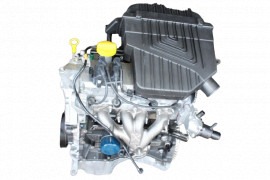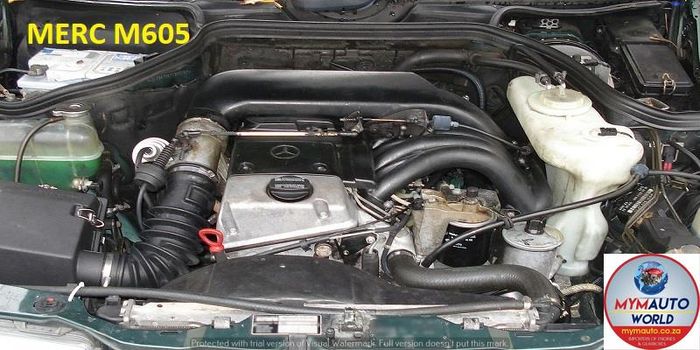Exploring the Inner Functions of a Compact Vehicle's Engine System
As drivers, we commonly consider approved the elaborate procedures that take place within the confines of our car's engine system. The portable yet complex machinery that drives us ahead is a wonder of design precision and coordination. From the regulated surges in the burning chamber to the meticulous timing of fuel injection, every part plays a critical duty in the smooth operation of the engine. In this expedition of a small automobile's engine system, we will untangle the internal operations of this mechanical symphony, clarifying the mysteries that drive us forward on our everyday journeys.
Combustion Refine Summary
The burning process in a compact vehicle's engine system is an essential system that effectively converts gas into power to power the automobile. This procedure happens within the combustion chamber of the engine, where gas and air mix, ignite, and produce regulated surges. The burning process consists of four major stages: intake, compression, exhaust, and power.
During the consumption phase, the piston relocates downward, pulling in a combination of air and fuel right into the combustion chamber. The following stage, compression, includes the piston moving up, pressing the air-fuel blend to raise its potency. Subsequently, in the power stage, the ignition system sparks the pressed blend, resulting in a rapid expansion of gases that compels the piston pull back. This downward activity produces the power needed to drive the vehicle. In the exhaust stage, the burnt gases are eliminated from the combustion chamber with the exhaust shutoff, preparing the chamber for the following cycle. This cyclic burning process is essential to the operation of a compact car's engine system, making sure effective energy conversion for propulsion.
Piston and Cylinder Interaction

The piston's exact fit within the cyndrical tube is essential for keeping ideal compression and protecting against power loss during combustion. Tight clearances between the piston and cyndrical tube wall surfaces make certain effective securing, enabling the piston to relocate efficiently without enabling gases to leak past. Correct lubrication is likewise essential to minimize friction and put on in between these elements, boosting long life and efficiency.
Furthermore, the layout and products used in manufacturing the piston and cyndrical tube effect engine effectiveness and longevity. Modern engines commonly use light-weight yet long lasting products like light weight aluminum alloys for pistons and cyndrical tube linings to reduce inertia and boost thermal effectiveness. Generally, the harmonious interaction between the piston and cylinder is basic to the engine's capability and total efficiency.
Fuel Injection System Functionality
Fuel shot systems in compact automobile engines play Look At This a vital function in exactly supplying fuel to the burning chamber for controlled and reliable ignition. The fuel injection system operates by infusing fuel into the burning chamber at the ideal moment throughout the engine's procedure (opel corsa engine). This specific timing ensures that the fuel mixes uniformly with the air for correct burning, leading to enhanced fuel efficiency and decreased discharges
There are largely 2 types of gas injection systems utilized in compact vehicle engines: port gas injection (PFI) and direct fuel injection (DFI) PFI systems inject gas into the consumption port before the intake shutoff, while DFI systems inject gas directly into the burning chamber. Both systems have their benefits, with DFI offering better gas atomization and PFI supplying a more affordable option.
Comprehending Engine Air Conditioning Mechanisms
Efficient operation of a compact car's engine relies greatly on the performance of its cooling systems. Engine cooling is vital to avoid getting too hot, which can result in severe damage and reduced performance. The air conditioning system in a portable vehicle generally consists of a number of elements interacting to manage the engine temperature level. One vital part is the radiator, which makes use of coolant to take in warm from the engine. As the warm coolant streams via the radiator, it releases warm right into the air, cooling down before going back to the engine. The water pump circulates the coolant with the engine and radiator, ensuring a regular circulation to regulate temperature. Furthermore, the thermostat helps control the coolant flow to preserve optimal engine temperature level. Some cars also have cooling down fans that turn on when added air conditioning is required, such as throughout heavy website traffic or heat. Comprehending these engine air conditioning devices is vital for maintaining the efficiency and durability of a small lorry's engine system.

Exhaust System Elements Explained
The optimal performance of a small car's engine air conditioning devices depends upon a complementary system known as the exhaust system, which makes up numerous necessary components for guaranteeing efficient emissions and engine efficiency. The exhaust system consists of parts such as the exhaust manifold, catalytic converter, muffler, and tailpipe. The exhaust manifold accumulates exhaust gases from the engine's routes and cyndrical tubes them to the catalytic click over here converter. The catalytic converter then transforms hazardous pollutants in the exhaust right into less damaging emissions prior to releasing them with the muffler and tailpipe.
One critical component of the exhaust system is the oxygen sensing unit, which keeps an eye on the oxygen levels in the exhaust gases to aid regulate fuel intake and make sure optimal engine performance. opel corsa engine. Furthermore, the resonator may be present in some exhaust systems to lower noise degrees. In general, the exhaust system plays an essential role in keeping engine effectiveness, lowering damaging emissions, and guaranteeing a quieter driving experience for small car owners

Conclusion
Finally, the small automobile's engine system is an intricate combination of components that interact to help with the combustion process, convert find more gas right into power, and expel waste gases. Understanding the inner functions of the engine system, including the piston and cyndrical tube communication, gas injection system, engine air conditioning devices, and exhaust system elements, is critical for keeping optimum efficiency and effectiveness of the vehicle.
The burning procedure in a portable car's engine system is a vital system that successfully converts fuel into energy to power the automobile.Fuel shot systems in portable vehicle engines play a critical role in specifically supplying fuel to the combustion chamber for efficient and regulated ignition.There are primarily two kinds of fuel injection systems used in portable vehicle engines: port gas shot (PFI) and straight gas injection (DFI) Recognizing these engine cooling devices is crucial for preserving the performance and longevity of a portable vehicle's engine system.
The ideal functioning of a small vehicle's engine air conditioning systems depends on a complementary system understood as the exhaust system, which comprises different essential parts for ensuring effective exhausts and engine performance.